Carl Maxey Center
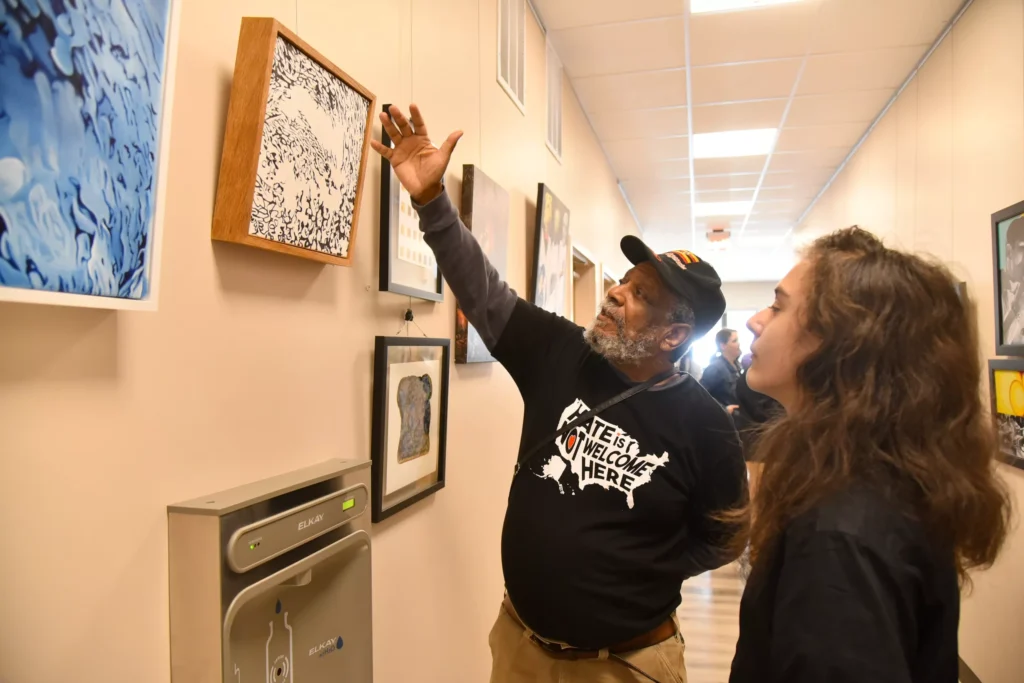

Ruben Trejo (1937–2009) was born in a Chicago, Burlington & Quincy railroad yard in St. Paul, Minnesota, where his father, a mixed Tarascan Indian and Hispanic from Michoacán, Mexico, and his mother, from Ixtlan in the same Mexican province, had found a home for the family in a boxcar while his father worked for the railroad. Trejo became the first in his family to graduate from college, and in 1973 he moved to the Pacific Northwest, where he began a thirty-year association with Eastern Washington University as teacher and artist.
His isolation from major centers of Chicano culture led him to search for self-identity through his art. Influenced and inspired by such writers and artists as Octavio Paz and Guillermo Gómez-Pena, he explored a dynamic, multidimensional worldview through his sculpture and mixed-media pieces and created a body of work that deftly limns his identity as an artist and a Chicano. Throughout his long teaching career, he worked tirelessly to create opportunities for young Chicanos through tutoring and mentoring.
“Multiple backgrounds can form such two- and three-dimensional ideas that they take you to the brink of lunacy, but I have used this rich background and ethnic landscape for creating art. As a student at the University of Minnesota, I often wondered what the study of Russian history, Shakespeare, English literature, or Freud . . . had to do with cleaning onions in Hollandale, Minnesota, picking potatoes in Hoople, North Dakota, or visiting relatives in Michoacán. This diversity of ideas can produce a three-headed monster or an artist, and I chose the latter.” -Ruben Trejo
https://marmotartspace.com/art-for-sale/ols/categories/ruben-trejo
https://uwapress.uw.edu/book/9780295990040/ruben-trejo/
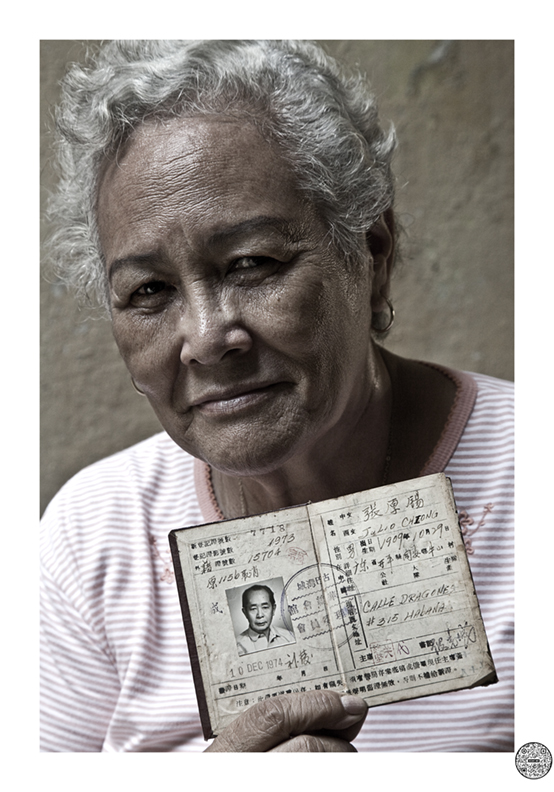
With high intentions to go fishing, Pok Chi Lau has traveled to 36 countries, and he has ended up with more photographs than fish at the end of his fishing poles. Through the years, he has come to the realization that in the history of China, stretching from around 1700 to 1950, her poor coastal fishing villagers experienced some of the first Diasporas to different parts of the world, especially Southeast Asia.
He was born in British Hong Kong in 1950. Since 1967, Pok Chi Lau 劉博智, has been a documentary photographer. His work on migration focuses on the Chinese Diaspora in the Americas, Cuba, and Malaysia and now Myanmar. For a decade, he also documented the Diaspora within China, where rural peasants/migrants from all over China moved to seek factory work in coastal Made-in-China regions.
Pok Chi Lau is Professor Emeritus of PhotoMedia in the Department of Design at the University of Kansas, which has provided him with numerous international research opportunities, and through which his work has been exhibited and published broadly. Besides his work as a documentary photographer, Lau’s work as a poet and essayist has led him to collaborate with professionals in East Asian studies, journalism, ethnic studies, anthropology and social science.
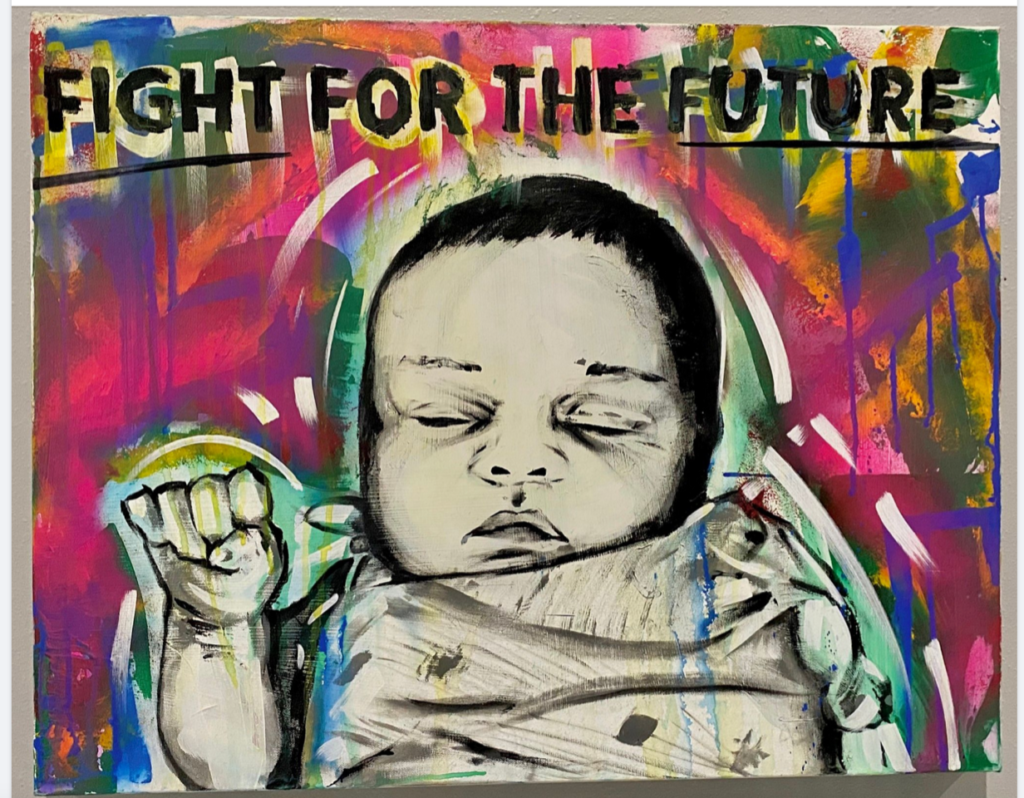
From: SPOTLIGHT: NATIVE ART CONTEST WINNER JACOB MAURICE JOHNS by Helen Oliff May 24, 2019 NativeKnot.com
Jacob Maurice Johns: Hometown: Mesa, Arizona Tribal Affiliation: Akimel O’otham (Gila River Pima) and Hopi
Jacob attended cosmetology school in Washington state and then worked as a hairdresser and rave promoter/DJ before discovering his passion for social issues and completely shifting gears in his career. Jacob became serious about his social activism in 2016 after the presidential election and contributed greatly to movements such as the water protection protest at Standing Rock. Today, Jacob contracts as a Community Supported Organizer for the nonprofit organization Backbone Campaign, where he focuses on organizing front-line and non-violent direct action.
Art has been a passion of Jacob’s for as long as he can remember — his mother was a portrait artist, so he grew up in an environment that nurtured creativity. Jacob’s skills are mostly self-taught, but his mother provided some tips and tricks on portrait drawing once that became his focus in 2002. Early on, Jacob focused mainly on black and white paintings but has since incorporated more color into his work to create a “gritty urban feel that brings light to darkness” and connects the past to the future.
We as a society crave new models for progressing the consciousness of humanity. As a community organizer, my work stems from this effort to innovate new ways of moving society forward. The out-dated models of how we live on this planet are failing, and we need new paradigms that uplift the planet to a higher state that heals our world. My organizing efforts have focused on multiple interconnected issues involving social justice and minority rights, as well as environmental protection. Currently, I immerse myself in progressing society in a multitude of ways.
I draw from my cultural heritage continuously as I work, using traditional ceremonious concepts, combined with art and activism with each event, rally and movement, taking us one step closer to a mindful planetary consciousness. I am stepping full time into this work in order to help co-create tangible goals instead of adding to opposition. We as human beings need to create new ways of connecting that break down imagined walls of separation.
https://www.facebook.com/studio1eleven111
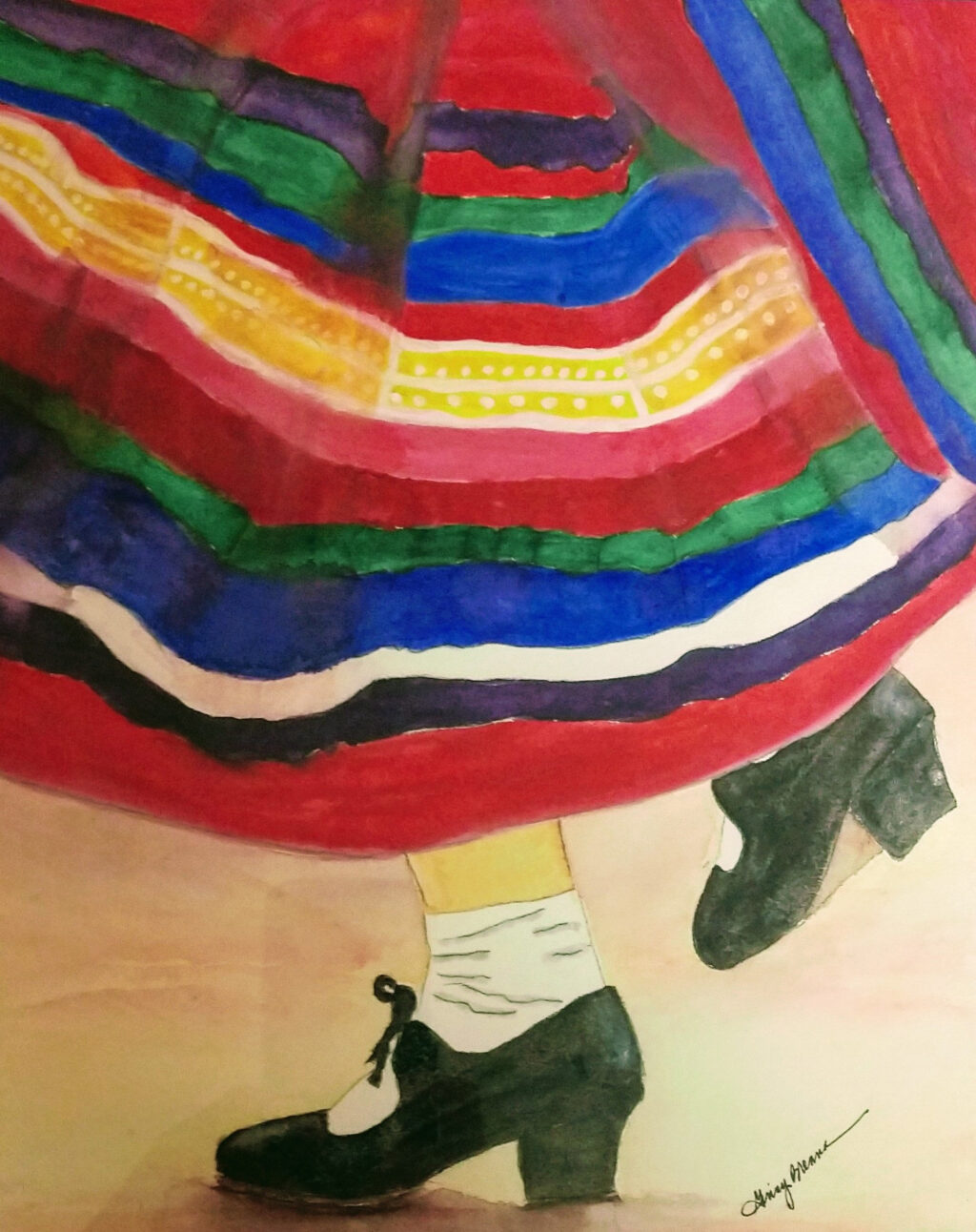
Having grown up in Sunny Southern California, into a very colorful and artistic Latinx family, Ginny has been exploring art since early childhood. Her father would spend time drawing animals for her and encourage her to know both Spanish and English names of each animal they would draw together. Life and career allowed the fortune of living in the beautiful western cities of Los Angeles, Portland, Seattle and Spokane all bringing on the continued exploration with art. While also residing in the central US in Chicago brought a new connection to urban appeal for painting buildings and lastly while thriving in Southwest Virginia where there is sunny, natural beauty abound provided more exploration in beautiful Appalachia.
Ginny has spent over twenty years painting and studying art. Her art has also been influenced by her early introduction to use of color with her mother teaching her how to sew and the colorful selection of fabrics that were used. Ginny’s love of visiting Mexico and wonderful artist studios and museums, while vacationing in Mexico she schedules studio art time with local artist to continue to learn more about Mexico and local art. Ginny’s background in commercial interior and furnishings career allowed her to continue to study the use of color. Throughout her adult life Ginny has studied art study with art instructors, as she moved around the country and all the while studying the works of her favorite artists, Winslow Homer, Roldolfo Morales, Charles Reid, as well as English Artist, Richard Taylor.
During her residence in Seattle Ginny was part of the Seahurst Co-Op Gallery and participated in one of the largest watercolor societies in the country, the Pacific Northwest Watercolor Society also taking advantage of the many great local artist workshops that were available. She also welcomed and is still a member of the Arts Depot in Abingdon, VA during another career move there.
Now a second-time resident of Spokane, Ginny has become actively involved in the art community not only with her art but with her work in advertising sales with Art Chowder Magazine and is a member of Avenue West Art Gallery, Spokane Watercolor Society and River Ridge Association of Fine Arts .
The uncertainty and excitement of watercolor and the challenges of new artistic directions keeps Ginny striving for an even better composition or capturing a great light or finding just the right color. Ginny is always searching for a beautiful landscape, a great human interaction, or a lovely flower.

Frances Grace Mortel (she/her) is a photographer and filmmaker, born and raised in Manila, Philippines. She studied in University of the Philippines Film Institute (UPFI) and worked as art director/production designer for several film and television projects. She moved to Spokane, Washington in 2016 and completed the Digital Media Production program at Spokane Falls Community College (SFCC) in 2019. She graduated with a BA Film degree at Eastern Washington University (EWU) in 2021, receiving the Dean’s Student Excellence Award, Social Justice Advocate of the Year Award, and Achievements in Screenwriting and Criticism.
A member of Brown Girls Doc Mafia, Filipino American Artist Directory, and Spokane Film Project — she has exhibited in Terrain, FemFest Art Festival, Spokane Arts’ Saturate, Pagdiriwang’s Larawan in Seattle Center, and other group shows with local collectives such as LFrances currently works as Communications Specialist for APIC Spokane and serves as board member for Spokane Film Project. A member of Brown Girls Doc Mafia and Filipino American Artist Directory — she has exhibited in Terrain, FemFest Art Festival, Spokane Arts’ Saturate, Pagdiriwang’s Larawan in Seattle Center, and other group shows with local collectives such as La Resistance and Shades of Me. She participated in Santa Barbara International Film Festival – Film Studies Program (2020), Telluride Film Festival – Student Symposium (2021), and is part of the pilot batch of WA Filmworks Media Mentorship Program (2021). She recently won the Most Promising Filmmaker Jury Award at the Spokane International Film Festival 2022 for her short film, Dear Nanay, which also took the Honorable Mention Jury Award at the Local Sightings Film Festival 2021 and Cinemetropolis Award for Best Local Short at Seattle Asian American Film Festival 2022. You may find her upcoming exhibits and screenings here: mortelmedia.com/calendar
The challenges of being a mother, immigrant, and queer artist of color fuel her desire to tell empowering visual stories that expose human truths and stand for social justice. Frances is currently capturing conceptual portraits with focus on women and QTBIPOCs (Queer, Trans, Black, Indigenous, People of Color), exploring street reportages highlighting the working class, writing and producing fiction & non-fiction films about the plight of immigrants, and experimenting on other alternative and accessible ways to create intersectional and intergenerational media.

I am a Native American artist of Blackfeet descent from Montana currently working with acrylics on canvas. I have been painting with acrylics for about ten years after retirement from office work. Rather than aiming for photo-realism with my subject matter, I endeavor to mine the spirit and mood with bright earthy colors. I share studio space with the artists at Yes Is A Feeling art gallery in the Steamplant Building in downtown Spokane.
I work hard to produce a professional product and also offer prints of some works to make it accessible and affordable to all who wish to have my art in their homes.
As a visual artist working with acrylics, I am endlessly seeking that elusive composition, that outstanding color, that singularity that I need to capture on canvas. But the search doesn’t end in a simple recreation of what I see, because inside all of the creatures and people and scenes I portray, I am also looking for the energy within to bring it out with the language of color. I want to appeal not only to my indigenous people but to all peoples and to share the beauty that I see in the simplest animal or the most complex human being’s face. This is what drives my art, this search to find the language of color and to be able to speak it with competence some day.
My subject matter includes portraits, scenery, animals and Native American peoples. I am an enthusiastic advocate for my people and my art reflects our Blackfeet people’s love of horses and bison, our ancestral lands, the energies and magic that these animals represent to us. I am challenged by the medium of paintbrush and canvas but energized by color and the inner life of all of creation and I hope to convey that excitement to the viewers of my art.
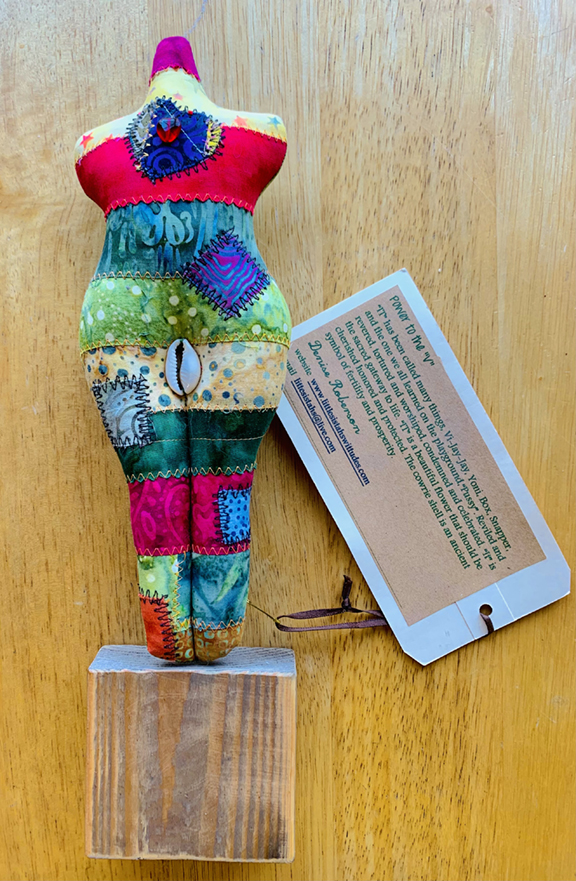
Denise Roberson’s mother taught her how to sew when Denise started middle school. Many years later, her mother asked her to attend a doll-making class. That was over thirty years ago. Denise creates little sistahs using the female form as inspiration. She believes women are powerful, strong, and capable. The theme of powerful women is evident in her work. Denise writes stories for her little sistahs, giving you a little insight into the sistahs character.
For over thirty years, I have taken flat pieces of fabric and created 3-dimensional figures, my Little Sistahs. When she is fully dressed, her hair and make-up done, she is ready for her story. We sit down at the computer, select a name and write her story. The Little Sistah is now ready for her debut. I want people to find something they can relate to when they see my dolls. I want them to realize the power and beauty of women and recognize we all have something to give.
“IT” is called many things, Vi-Jay-Jay, Yoni, Box, Snapper, and the one we all learned on the playground, Pussy. Reviled and revered, condemned and celebrated. Yet, “IT” is the sacred gateway to life and a beautiful flower that should be honored and protected. The cowrie shell is an ancient symbol of fertility and prosperity.
Many cultures have used the cowrie shell as currency
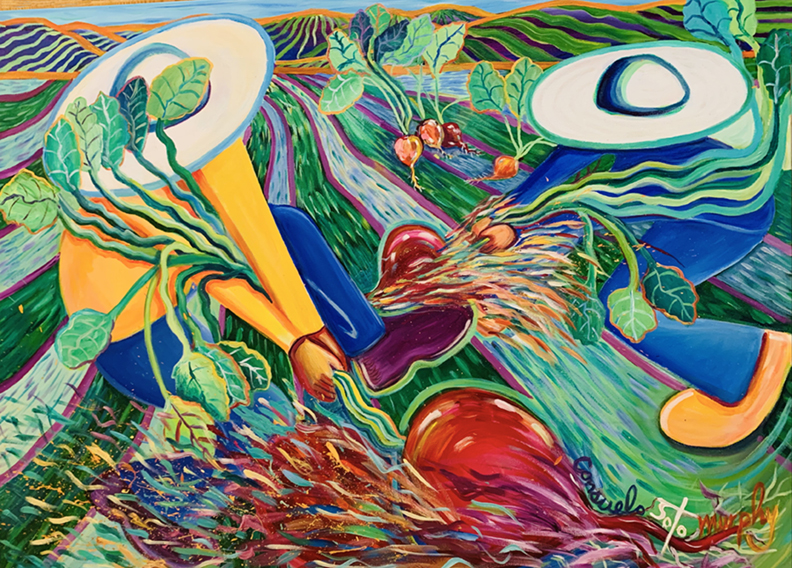
Consuelo Soto Murphy studied Art and Art Education at Eastern Washington University and Spokane Falls in Spokane Wa.
In second grade, her teacher declared her an artist when she brought Consuelo up to the front of the class and she held up a drawing of a twisted and very large and brightly colored octopus. Consuelo believed her and from then on she was an artist.
Consuelo graduated from Sunnyside High School in 1979 and Graduated from Eastern with degrees in Art Education, Studio Art and K-12 Education. In 1989 Consuelo began teaching Art at Richland High School in Richland, Washington where she taught Art for 32 years while continuously pursuing her painting career.
Consuelo Soto grew up as a child migrant worker along with her family, doing field work across the United States, season to season, before eventually settling in the Yakima Valley of the Pacific Northwest.
Despite the grueling, backbreaking work, Consuelo’s art pieces are inspired by the positive memories of the beautiful landscapes, the flourishing crops, and the love and relationships forged with her family and friends. Consuelo was the seventh child of nine children. While the older ones worked all day in the fields, Consuelo was able to go to school during the day, working before and after school and during the summers.
While Consuelo works primarily in acrylics on canvas, she is far from limited to this medium. The magnificent pieces produced by Consuelo Soto Murphy have gone to homes all over the world. Her work has been featured in publications and galleries as well as featured on television productions.

The question I’m asked most frequently is how a black doctor in his 50s working on the Navajo reservation started doing street art on said reservation. In retrospect, it was only natural for this evolution to occur.
I started working in a small community between the Grand Canyon and Monument Valley called Inscription House in 1987. I’d always been drawn to photography and built a darkroom shortly after my arrival on the Navajo Nation. My passion photographically is shooting black and white in a documentary style inspired by people like Eugene Smith, Eugene Richards, Joseph Koudelka and others. By going out and spending time with people in their homes and family camps, I have come to know them as friends. Interestingly, these home visits enhance my doctor/patient relationship by helping me be a more empathetic health care practitioner.
I’ve always been drawn to street art, graffiti and old school hip-hop. I was attracted to the energy of the culture in the 80s and though I was miles away from the epicenter, I thought of myself as a charter member of the Zulu Nation. I would travel to New York City to see graffiti on trains, on buildings and in galleries. I did some tagging in the 80s before coming to the Navajo Nation and participated with a major billboard “correction” on the reservation shortly after my arrival. My early interventions on the street were largely text based saying things like “Thank you Dr. King. I too am a dreamer” or “Smash Apartheid” and so on.
In 2009 I took a 3-month sabbatical to Brasil which coincided with a difficult period in my life. Though I wasn’t looking for an epiphany, I was fortunate to stumble upon a passionate group of artists working on the street who befriended me. It was during this time that I appreciated how photography could be a street art form. Inspired by Diego Rivera and Keith Haring, I’d become disinterested in showing my photographs in galleries isolated from the people I was photographing and wanted to pursue a more immediate relationship with my community reflecting back to them some of the beauty they’ve shared with me. And in truth, I was infatuated with the feeling I got being with the artists in Salvador do Bahia and wanting to find a way to keep that vibe going I started pasting images along the roadside in June 2009.
My early photographic influences include the work of Joseph Koudelka, Garry Winogrand, Charles Moore, Robert Frank, Eugene Smith, Gordon Parks, Larry Towell, Mary Ellen Mark, Susan Meisalis, Roy DeCarava, Sebastio Salgado and Eugene Richards. I was blown away by Richards’ work in the late 80s and early 90s for Life Magazine and had an opportunity to spend 5 days picking his brain at Santa Fe Photographic Workshops in 1991. It’s this one person with one camera, frequently with only one lens shooting black + white film in ambient light aesthetic that informs my eye as well as 25 years spent in my home darkroom pursing the zone system. It’s been an interesting challenge attempting to bring that look to black and white prints on regular bond paper coming off a toner based plotter. I’d like to think that my vision is a part of the storytelling, first person, humanist tradition of the people I look up to mixed with a healthy dose of Diego Rivera + Keith Haring.
Regardless, I give thanks that the journey continues.
In beauty it is finished.
https://jetsonorama.net/welcome/
https://justseeds.org/artist/chipthomas/